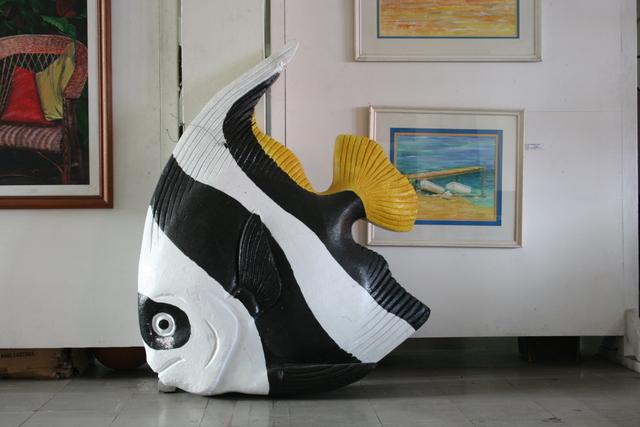After living in Suva for 3.5 weeks, it is quite peculiar that I have never felt that Suva is a foreign place at all. Everything is very familiar and similar to what I have seen back home in Indonesia. I grew up in the vastly-developing capital city, Jakarta. Social classes and income gap in Jakarta was, is, very wide that you can find everything from Chinese made coarse cloth to the top-notch haute couture gown from Valentino. Since I was young I have been spoiled with western exposure, particularly children entertainment. After I got into university, I just realized that the impact of globalization is very strong on me.
Strolling over the CBD area streets of Suva feels like walking on the lower-middle shopping areas in Jakarta or any other smaller cities in Java. From my view, Suva has, indeed, been influenced by globalization. This could be seen from the amount of imported products available in the market. Shops full of Chinese imported products, hectic and crowded pavements, heat and humidity, and distinctive ways of interaction. I cannot really explain the last bit but the similarities are indeed visible. However, since Suva and Jakarta are incomparable in terms of size, it is plausible that Suva only resembles some parts of Jakarta. Suva is indeed on a stage of development that Jakarta once had been. At first, I was questioning why the Suva is not as susceptible as Jakarta.
However, after 3 weeks living in Fiji I understand that Fiji has a strong traditional culture base. Jamba, kava, and strict family protocols are common conversation topics for me and the Fijians. Most of the people in the Suva are still having roles in their villages, such as Master Lai, the director of Fiji Arts Council, is still have a responsibility to continue the family tradition as the chief of the village. This is uncommon in Jakarta although I know a family that is still continuing the chief tradition in one of the village in Padang, Sumatra. I can say that the strong cultural root slows down the penetration process of globalization in Fiji—as the society demands both global advancements and local solidity.
Thanks to the Fijian, I am now respecting my cultural root more than ever.





























